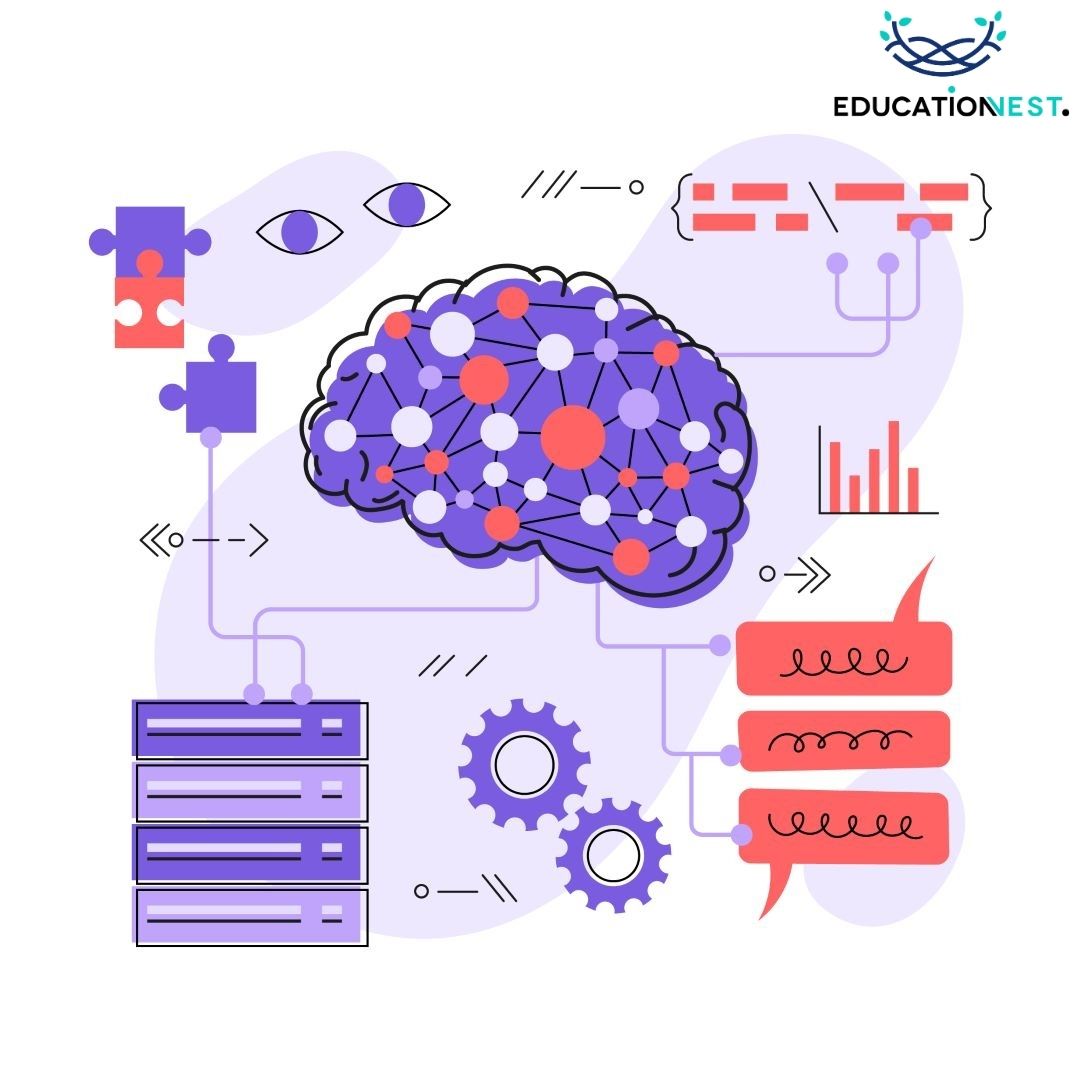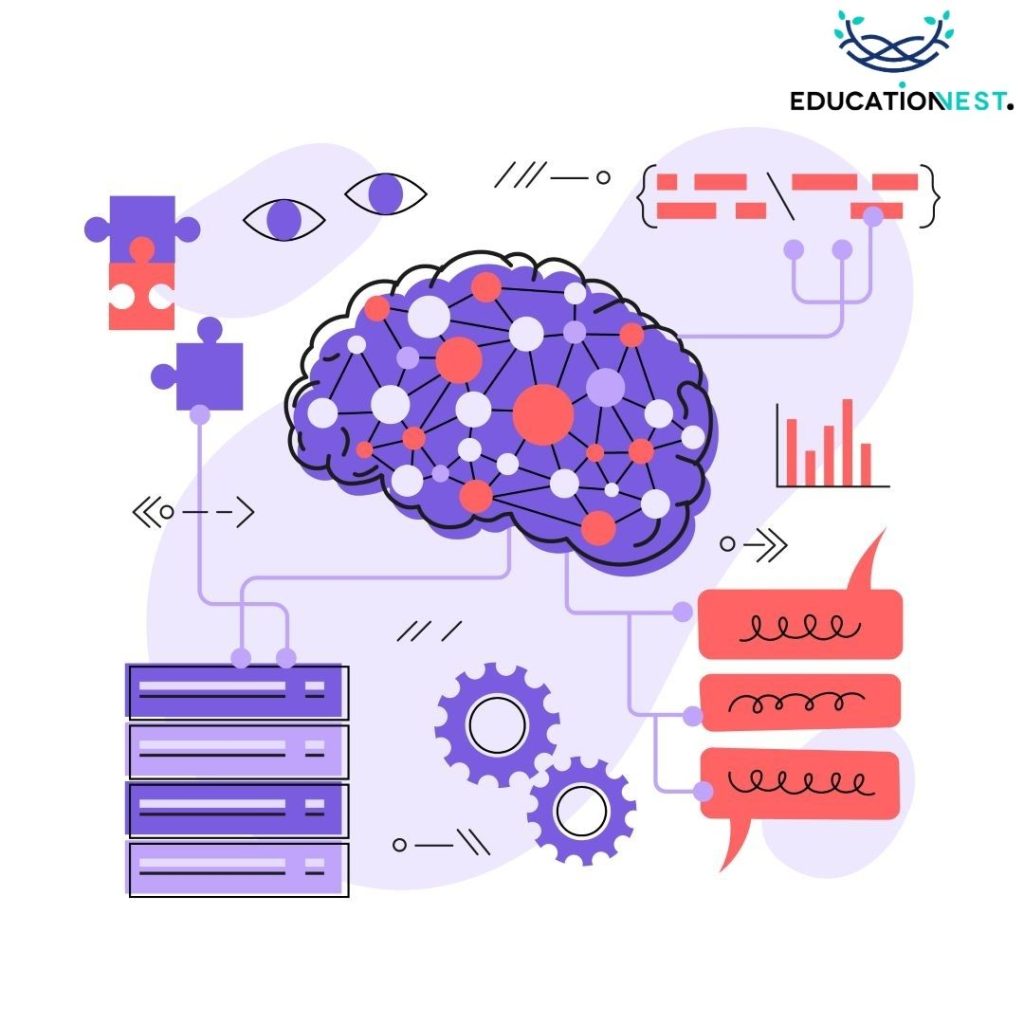
Deep learning is one of the most exciting and rapidly advancing fields in artificial intelligence today. As deep learning algorithms continue to deliver state-of-the-art results across various domains, demand for deep learning skills is at an all-time high.
In this blog post, we provide a comprehensive set of deep learning interview questions and answers to help you prepare for your next technical interview. Whether you are an aspiring deep learning engineer looking to break into the field or a seasoned practitioner preparing for your dream job, this guide will boost your confidence and equip you with insights to ace those machine learning interviews. First, let’s understand what deep learning is.
What is Deep Learning?
Deep learning is a subset of machine learning where artificial neural networks, algorithms inspired by the human brain, learn from large amounts of data. Deep learning models are capable of discovering intricate structures in data and learning complex patterns using multiple processing layers.
Some key properties of deep learning algorithms are:
- Use of multiple layers and non-linear activations for feature extraction and transformation.
- Ability to automatically learn high-level features from raw data.
- Capability to process diverse data types like images, text, audio, video etc.
- Requirement of large datasets and high compute power (GPUs).
Leading deep learning architectures include convolutional neural networks (CNNs), recurrent neural networks (RNNs), long short-term memory networks (LSTMs) and generative adversarial networks (GANs).
Why is Deep Learning gaining popularity?

Here are some key reasons why deep learning has seen massive adoption over the last decade:
Availability of large datasets: Deep learning models require huge amounts of training data. The rise of big data and datasets like ImageNet has fueled deep learning research.
Increase in compute power: Training complex deep learning models requires high compute capabilities. The advent of GPUs and distributed computing has enabled training of state-of-the-art deep learning models.
Advances in algorithms: Novel deep learning architectures like CNNs, RNNs, transformers have led to breakthrough results in domains like computer vision and NLP.
State-of-the-art performance: Deep learning has surpassed traditional ML techniques and achieved new benchmarks across diverse tasks like image classification, object detection, speech recognition etc.
Flexibility: Deep learning can be applied across domains like computer vision, NLP, recommendation systems, time series forecasting etc. The same algorithms can be reapplied to new use cases.
What are the prerequisites to learn Deep Learning?
Here are some essential prerequisites before you dive into deep learning:
- Math fundamentals: Linear algebra, matrices, calculus and probability are critical math concepts for understanding how deep neural nets work.
- Programming skills: Python and Python libraries like NumPy, Pandas, Matplotlib and PyTorch/TensorFlow are extensively used for building and training deep learning models.
- Machine Learning basics: Understanding train/test splits, cross-validation, bias-variance tradeoff, regularization etc. is required to effectively train and tune deep networks.
- Algorithms and data structures: Knowledge of algorithms like backpropagation and data structures like matrices, tensors, graphs used in deep learning architectures.
- GPU computing: GPUs are necessary for training deep learning models, so having some experience with GPUs/CUDA is very useful.
What are Convolutional Neural Networks?
Convolutional neural networks (CNNs) are a specialized type of neural networks that leverage convolution operators instead of general matrix multiplication in at least one of their layers. Some key properties of CNNs:
- Use convolutional, pooling and fully-connected layers to learn spatial hierarchies of features.
- Apply convolution filters to extract features from input data.
- Translation invariance characteristics make them very effective for computer vision tasks.
- Key architectures include LeNet, AlexNet, VGGNet, ResNet and Inception.
CNNs achieve state-of-the-art results on tasks like image classification, object detection, semantic segmentation etc. Pre-trained CNNs can also be used for transfer learning.
Explain the architecture of a Convolutional Neural Network.
A typical CNN architecture consists of:
- Input layer – Takes in image data as input
- Convolutional layers – Apply convolution filters to extract features. Alternated with pooling layers to reduce spatial dimensions.
- Flatten layer – Flattens the convolutional output to 1D vector
- Fully Connected (FC) layer – Apply weights and biases to learn non-linear combinations of features.
- Output layer – Generates final output prediction
The initial convolutional layers learn low-level features like edges, colors, texture patterns. The deeper layers learn higher-level features like object parts. The fully-connected layers learn non-linear combinations of these features for prediction.
Also Read:
A List of Best Machine Learning Datasets
What are the key parameters in the convolutional layer?
The key parameters that define a convolutional layer are:
- Kernel size – Height and width of the 2D convolution kernel or filter
- Stride – Number of pixels kernel shifts for each convolution step
- Zero padding – Adding zero padding around input to control output size
- Activation function – Nonlinearities like ReLU applied after convolution
- Number of filters – Each filter detects a specific pattern or feature
Carefully tuning these hyper-parameters is critical for training high-performance convolutional neural networks.
How does Pooling work on CNN?
Pooling is a downsampling operation that reduces spatial dimensions of the input volume. It operates on each input channel separately. Pooling helps to gradually reduce spatial size and network parameters. Key types of pooling are:
- Max pooling – Take the maximum value in the pooling window
- Average pooling – Take the average value in the pooling window
- Sum pooling – Take the sum of all values in pooling window
Max pooling is the most common approach. It selects the most activated features across windows, preserving only significant features. This allows layers higher up to learn more abstract representations.
What are Recurrent Neural Networks (RNNs)?
Recurrent neural networks are a type of neural network well-suited for processing sequential data such as text, time series, video, audio etc. Key properties of RNNs include:
- Have cyclic connections that allow information to persist across sequence steps.
- Maintain an internal memory state that gets updated based on new inputs and prior memory.
- Widely used for language modeling, translation, speech recognition, forecasting etc.
- Key architectures are LSTM, GRU which overcome vanishing gradient problems.
RNNs learn temporal relationships and long-term dependencies that are very useful for modeling sequence data.
Explain the concepts of Backpropagation and Vanishing Gradient problems.
Backpropagation is the primary algorithm used for training neural networks. It has the following steps:
1. Forward pass – Pass input through network to calculate output
2. Calculate loss with loss function like MSE
3. Backpropagate loss and calculate gradients
4. Update weights and biases using gradients
The vanishing gradient problem arises when gradients calculated through backpropagation become very small, hampering model training and convergence. As network depth increases, gradients shrink exponentially through the layers, depriving early layers of useful updates.
LSTM and GRU architectures overcome this by using gating mechanisms and additive updates to maintain gradient flow for long durations and sequences.
How are CNNs and RNNs different?
Here are a few differences between CNN and RNN:
| CNNs | RNNs |
| Used for computer vision tasks | Used for sequence modeling tasks |
| Process spatial data like images | Process temporal/sequential data like text, audio |
| Convolution and pooling layers to extract spatial features | Recurrent connections to learn temporal dependencies |
| Translation invariance characteristics | Maintain internal memory state |
| Feedforward architecture | Feedback connections |
| Converge faster | Can face vanishing gradient issues |
What are the applications of Deep Learning?
Some major applications of deep learning include:
- Computer Vision – Image classification, object detection and localization, image segmentation, image generation.
- Natural Language Processing- Machine translation, text generation, speech recognition, text classification.
- Recommendation Systems – Recommending movies, music, products based on user data and behavior.
- Bioinformatics – Protein structure prediction, disease prediction based on symptoms, DNA sequencing.
- Time Series Forecasting – Forecasting stock prices, demand, sales based on historical data.
- Drug Discovery – Discovering new medicines and drugs using deep learning.
Deep learning will continue finding new applications given its excellent pattern recognition capabilities.
How do you handle overfitting in Deep Learning models?
Some ways to handle overfitting in deep neural networks:
- Early Stopping: Stop training when validation error starts increasing
- Dropout: Randomly drop layer units during training to prevent co-adaptation
- Data Augmentation: Expand training data with transformations like flip, rotate etc.
- Regularization: Add regularization penalties like L1/L2 to reduce weights
- Batch Normalization: Normalize layer inputs to stabilize distributions
- Reduce Architecture Complexity: Use simpler models like fewer layers, units, filters
Using a combination of techniques is recommended to effectively regularize deep learning models. Monitoring validation/test performance is also critical.
Explain Transfer Learning and how it is useful.
Transfer learning involves transferring knowledge gained from solving one problem to a new, related problem. In deep learning, we apply transfer learning in two ways:
1. Using Pre-trained Models – Take an existing pre-trained model for a task like image classification. Use its learned feature layers for new tasks by re-training the last classifier layer.
2. Fine-Tuning- Take a pre-trained model like VGG16. Unfreeze some higher layers and re-train on new data to adapt features to new tasks.
Transfer learning enables taking advantage of already learned features, avoiding lengthy training times and achieving better performance on new tasks with limited data.
What are Generative Adversarial Networks (GANs)?
Generative Adversarial Networks (GANs) are a framework for training generative models, often for image synthesis.
Key points:
- It consists of a generator model that generates synthetic images.
- The discriminator model tries to differentiate between real and fake images.
- Generator and discriminator are trained simultaneously in a minimax game framework.
- Generator keeps improving to fool the discriminator and make more realistic images.
- Common applications include image generation, image-to-image translation, text-to-image generation etc.
GANs have enabled remarkable progress in creating realistic synthetic images and content.
Conclusion
We have covered a wide range of deep learning interview questions ranging from conceptual foundations to advanced architectures and applications. Prepare thoroughly for the coding interview rounds as well. We hope this guide helps you excel in your deep learning interviews -Good Luck!

